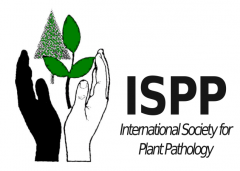
The Brachypodium distachyon UGT Bradi5gUGT03300 confers type II fusarium head blight resistance in wheat
Plant Pathology
2019 - Vol. 68 - pag. 334-343Authors: M. Gatti F. Cambon C. Tassy C. Macadre F. Guerard T. Langin M. Dufresne
Fusarium head blight (FHB), caused by fungi belonging to the Fusarium genus, is a widespread disease of wheat (Triticum aestivum) and other small‐grain cereal crops. The main causal agent of FHB, Fusarium graminearum, produces mycotoxins mainly belonging to type B trichothecenes, such as deoxynivalenol (DON), that can negatively affect humans, animals and plants. DON detoxification, mainly through glucosylation into DON‐3‐O‐glucose, has been correlated with resistance to FHB. A UDP‐glucosyltransferase from the model cereal species Brachypodium distachyon has been shown to confer resistance both to initial infection and to spike colonization (type I and type II resistances, respectively). Here, the functional characterization of transgenic wheat lines expressing the Bradi5g03300 UGT gene are described. The results show that, following inoculation with the fungal pathogen, these lines exhibit a high level of type II resistance and a strong reduction of mycotoxin content. In contrast, type I resistance was only weakly observed, although previously seen in B. distachyon, suggesting the involvement of additional host‐specific characteristics in type I resistance. This study contributes to the understanding of the functional relationship between DON glucosylation and FHB resistance in wheat.
Downloads
Gatti_et_al-2019-Plant_Pathology.pdf (508 KB)




